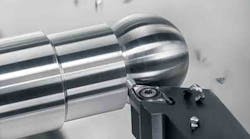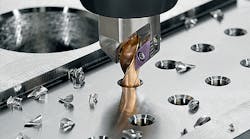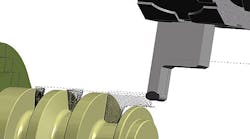U.S. machine shops and other manufacturers consumed $188.7 million worth of cutting tools during June, an increase of 9% over the May total. However, the result also represents a 1% decline in consumption from the June 2014 total.
The month-to-month increase may be viewed as a hopeful sign of increasing activity in the domestic manufacturing sector, as cutting tools are the primary consumable used by manufacturers, and cutting tool consumption offers an indictor of overall activity in U.S. manufacturing.
The data is drawn from the Cutting Tool Market Report, a monthly update issued in collaboration by the U.S. Cutting Tool Institute (USCTI) and AMT – the Association for Manufacturing Technology. The report is based on actual consumptuion figures provided by companies participating in the CTMR program, represent the majority of the U.S. market for cutting tools.
“The momentum has definitely slowed in the second quarter of the year and has brought us to a relatively flat position compared to 2014 as we hit the halfway mark,” commented USCTI president Tom Haag. “Many economic indicators look solid as the auto industry and aerospace production have a positive outlook so we remain cautiously optimistic that we will see tepid growth through the remainder of the year.”
While Haag described the current manufacturing activity as “relatively flat,” the outlook for near-term improvement is also uncertain, as explained recently by AMT president Douglas K. Woods in reference to the monthly U.S. Manufacturing Technology Orders report. In contrast to the index to current activity provided by the CTMR, the USMTO report is an index to business confidence in the machining and manufacturing sector.
“The industry was certainly not forecasted to be this weak, but the oil-and-gas market as well as international economies have adversely affected our markets both in Europe and Asia,” Haag concluded.











